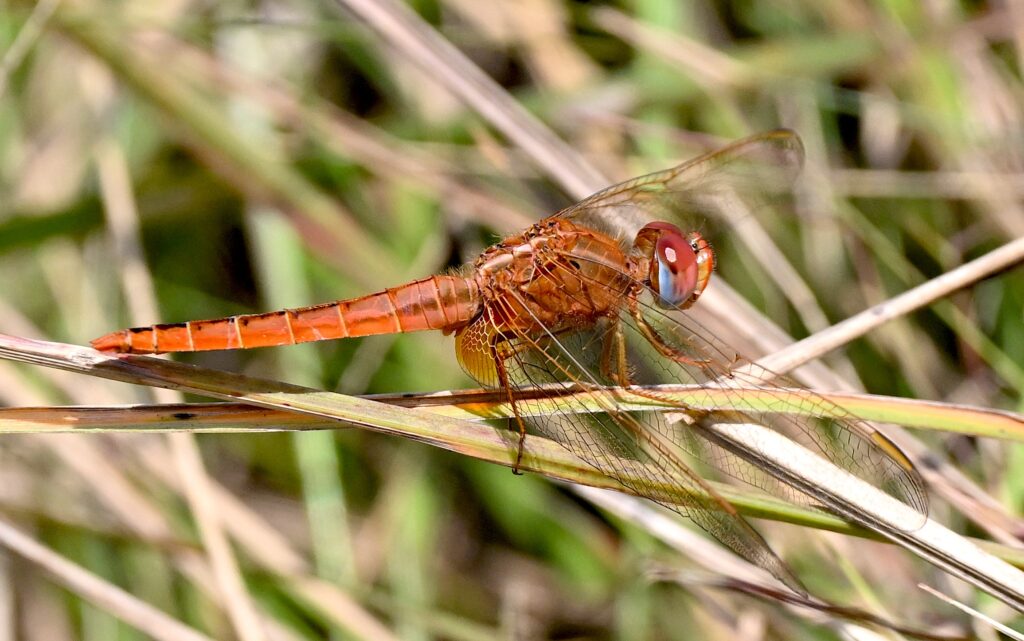Renée, Hannah & Rosstin
Some of us began the morning with a quick walk through Kakamega forest, guided by our knowledgeable guide Job, while others stayed back and caught up on sleep. We were finally able to see the coveted Brown Throated Wattle Eye (bird), which has been teasing us with it’s iconic call since the first morning we arrived here. Amongst others, we also saw a couple of other bird species that are exclusive to Kakamega forest and surrounding areas including the Buff Spotted Woodpecker, and the Uganda Woodland Warbler. What a way to work up an appetite for breakfast!
After breakfast, Dr. Lougheed talked to us about the word of the day, autodidacticism, or self-learning, a skill that we are expected to develop and exhibit throughout this course, asking Dr. Lougheed, Dr. Wang, our guide Job, and Carol the National Director of Wetlands in Kenya all sorts of questions, seeking to broaden our wealth of knowledge.
We also had a short debrief regarding our frogging endeavour last night. We discussed how frogs compete for acoustic space, ideal areas for males to call and attract females. Dr. Lougheed also told us about the sneaky satellite males, that hang out around a “handsome” sounding male to steal the females that they attract. How rude!
We then took part in the highly anticipated, and exceedingly discussed art activity. The activity took place in three parts and was aimed to teach us how to properly observe, and to notice the details that make each species unique. Dilini ventured into the forest and found us many different flowers, leaves, and other treasures for us to draw. We started by attempting to recreate our chosen plants by sketching them without looking at the page. This was done to teach us the special dynamics of each species, and we all had a good laugh looking at the horror that was displayed within our field books. Next, we moved on to every artists worst nightmare, drawing hands! We had to capture the current state of our hands, in all of their camping glory, every vein, every scratch, and every birthmark to teach us how to be more detail oriented. Finally, we ventured out into the forest in our groups, and chose our own objects to draw. For this we each had one colour that was the dominant colour of our chosen object, and also the only colour we were allowed to use. While the art talent varied, I think we can all agree that we had a lot of fun.
After last night’s exhilarating frog expedition, we couldn’t resist the lure of the pond again (after all, one can never catch too many frogs). Leading our intrepid band of students was Job. Like a wise wizard, guiding young adventurers through a magical forest, Job expertly navigated us through the depths of Kakamega, revealing its hidden biodiversity with every step. Elizabeth’s keen eyes soon spotted a feisty baby African Bush Viper. Dr. Lougheed, armed with his snake tongs (aka. A big salad tong), eagerly rushed to examine the magnificent creature. Dr. Lougheed always complains that whenever he brings out the “Gentle Giant” that are his tongs, the snakes mysteriously disappear, but the mighty curse was broken today. Surrounded by us biology giants, the small viper valiantly tried to compete with Dr. Lougheed but could only manage to strike at his boots.
At hiking intersections, Job played bird sounds to lure out some of Kakamega’s avian inhabitants. We were thrilled to see a Buff-throated Apalis hopping around on the branches, a species that is intriguingly endemic to the Kakamega forest. Dr. Wang, along with some students, continued his water ecology observations. Comparing the results with last night’s findings, we noted that the dissolved oxygen levels were still low as the pond was recuperating from the high CO2 production from plant respiration and metabolism of the pond residents throughout the night. Through the prickly plants, amid admiring dragonflies, we trekked to a fast-flowing stream, there we collected more water samples to learn about the different abiotic factors shaping the evolution of organisms around us. This adventure not only deepened our appreciation for the forest’s rich biodiversity, but also underscored the delicate balance of its ecosystem. By the end of our hike, everyone was exhausted and starving for lunch.
Today was also the day that we began our formal debate exercise, where each group took on the roles of proponent, opponent and moderator to discuss highly current and important ecological topics. With a patient baboon amongst our spectators, the first group to present was Victoria, Brianna, and Alise who discussed whether or not National Parks are a good means of conservation. We then heard from Celina, Elizabeth, Vikas and Betty, moderated by a special guest (Dr. Steven Lougheed himself) who debated the topic of whether ex-situ conservation practices are beneficial for biodiversity. Then we heard from our final group of the day, Cassidy, Adam, and Isobel who discussed whether or not folk medicine is useful, and if it leads to the destruction of habitats. All of our groups did amazing, and so did the rest of the class who followed each presentation with a heavy and heated debate.
Ending off the evening, Dr. Wang gave us a quick talk about the often understudied abiotic factors of an ecosystem, such as elevation as well as dissolved oxygen or pH levels in water that shape the distribution of species around them.
We closed our last night at Kakamega forest with an owl night walk, playing calls of the African Wood Owl in hopes of attracting them out into the open where we’d be able to see them. Dr. Lougheed was finally able to coax one near enough to just barely be able to see its eyes as they reflected the light from our headlamps!
We’ll be writing to you from Masai Mara tomorrow, the last leg of our trip!

bush viper close up

dragonfly in glade
Leave a Reply